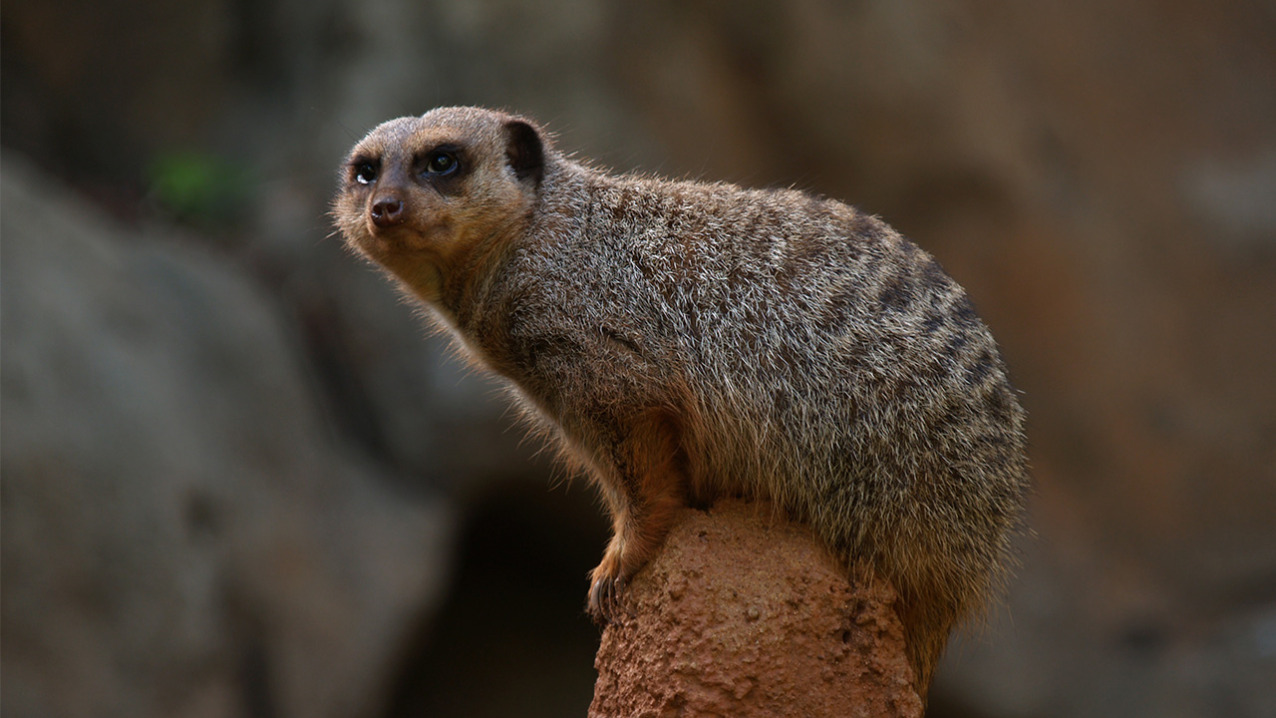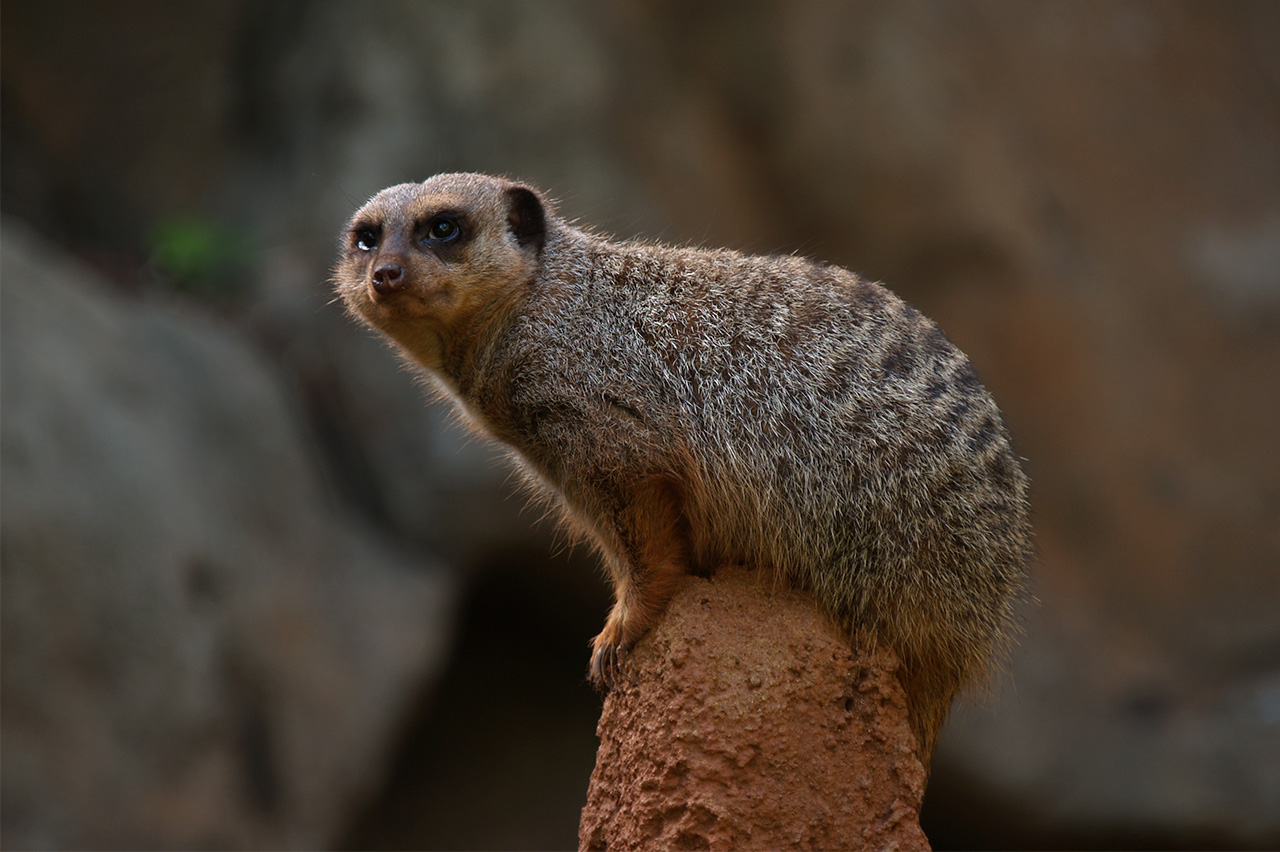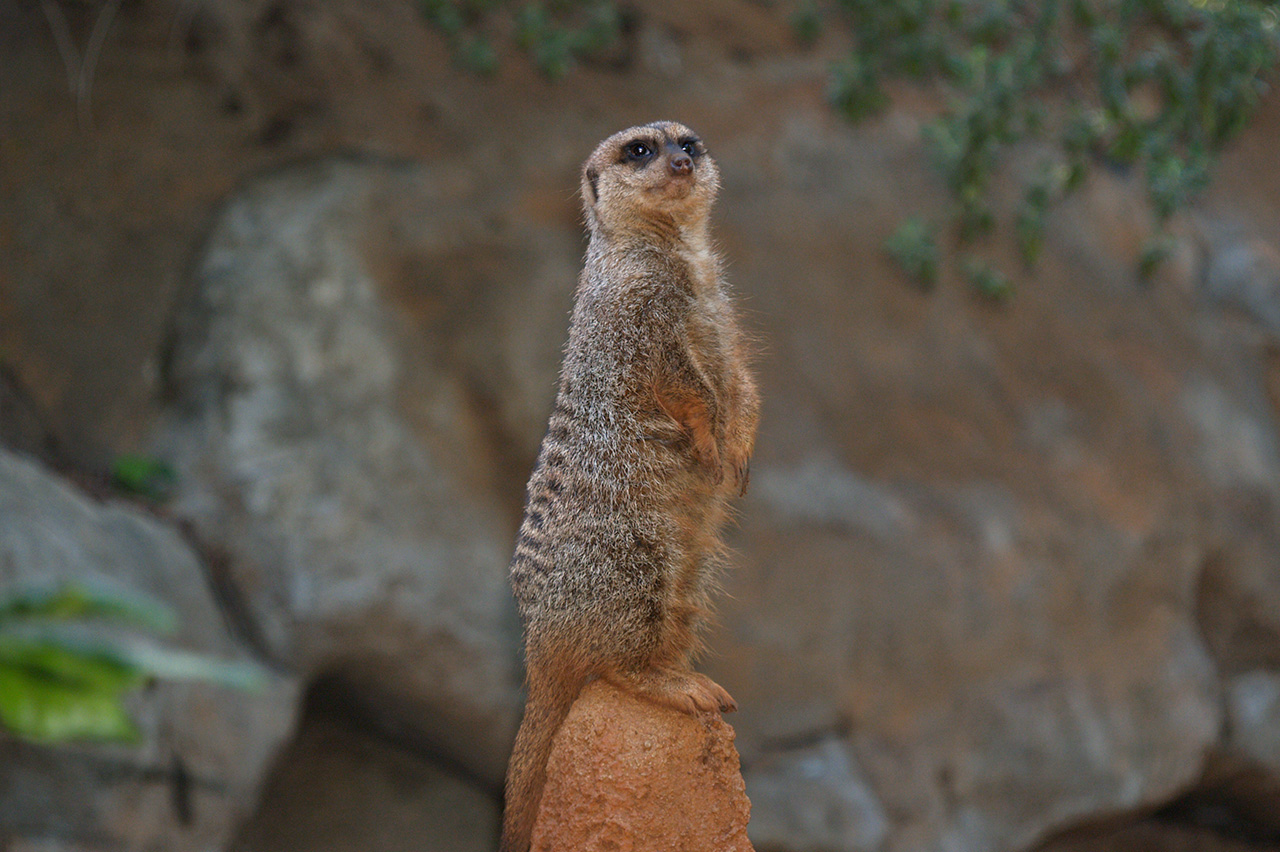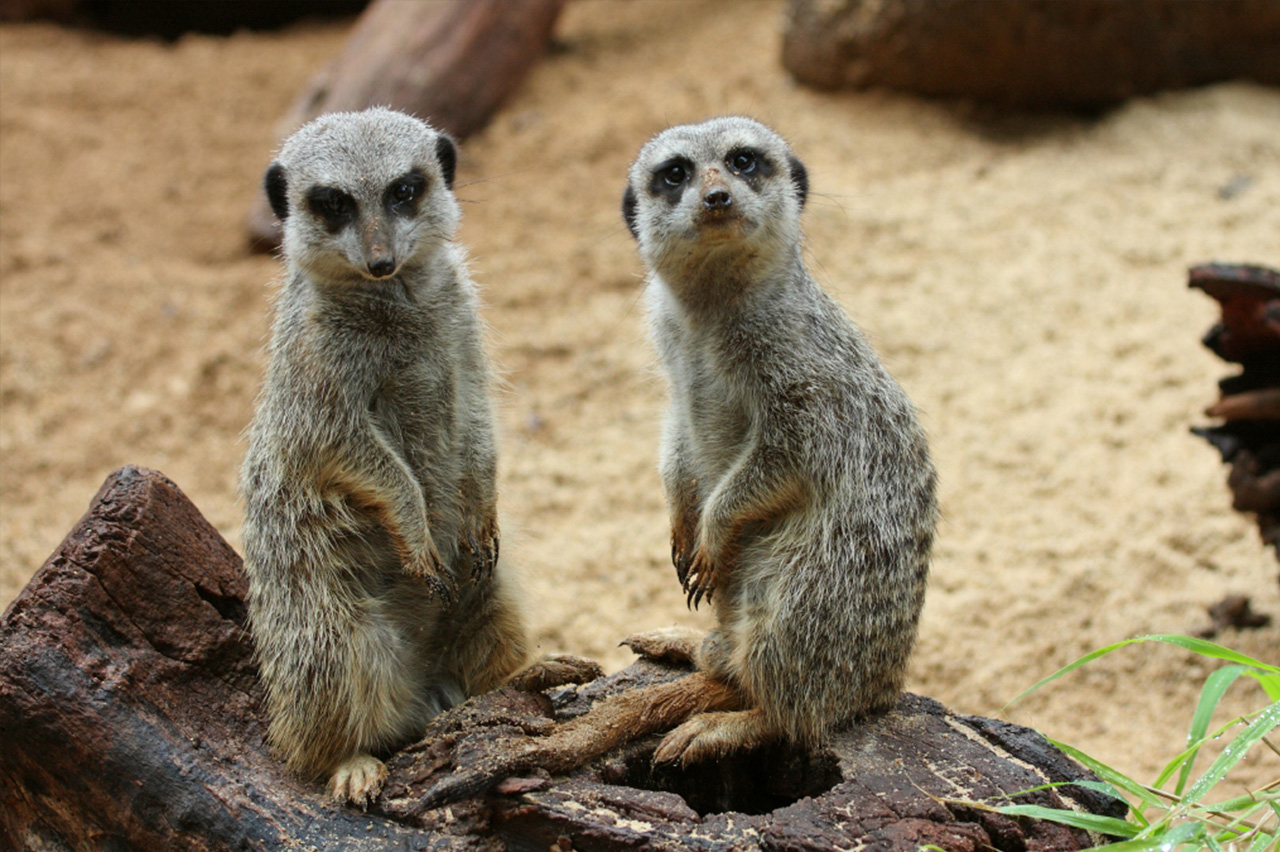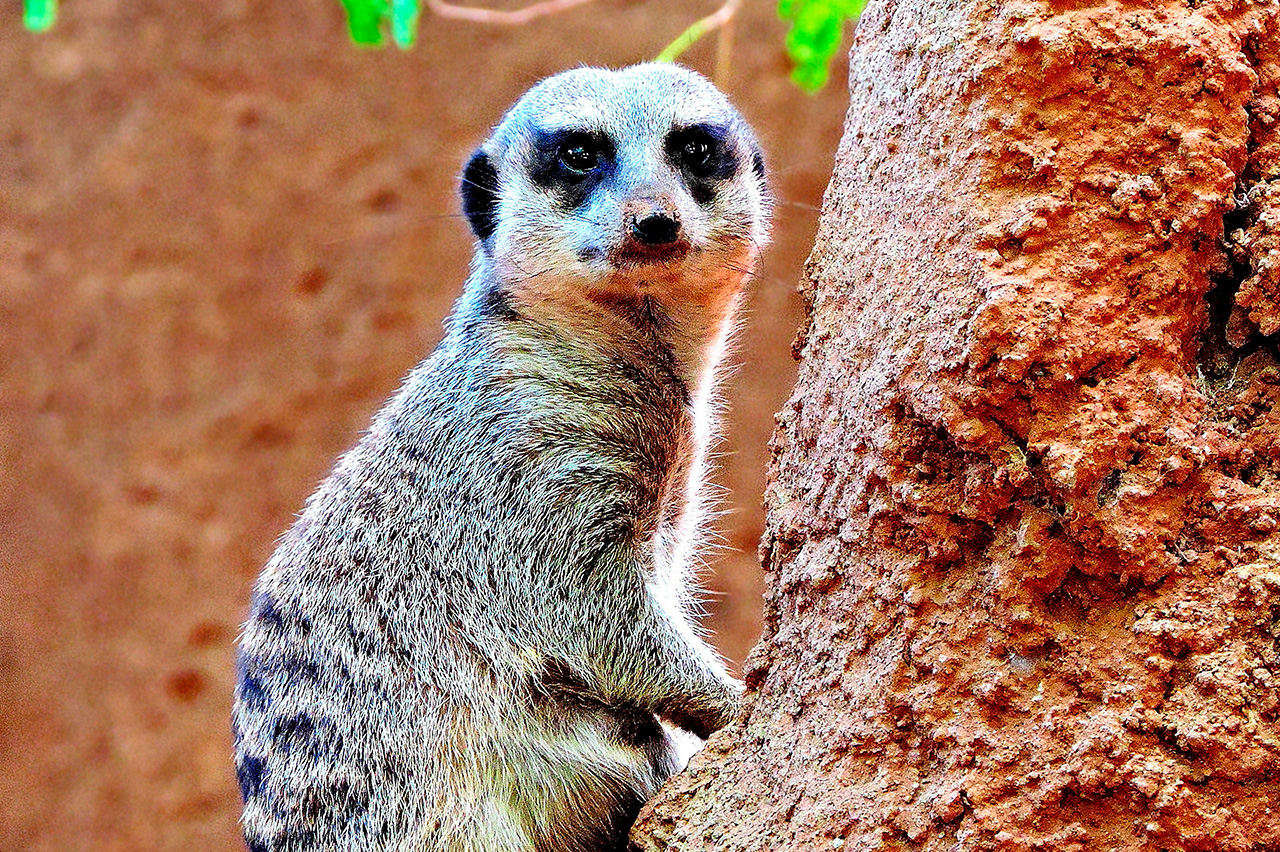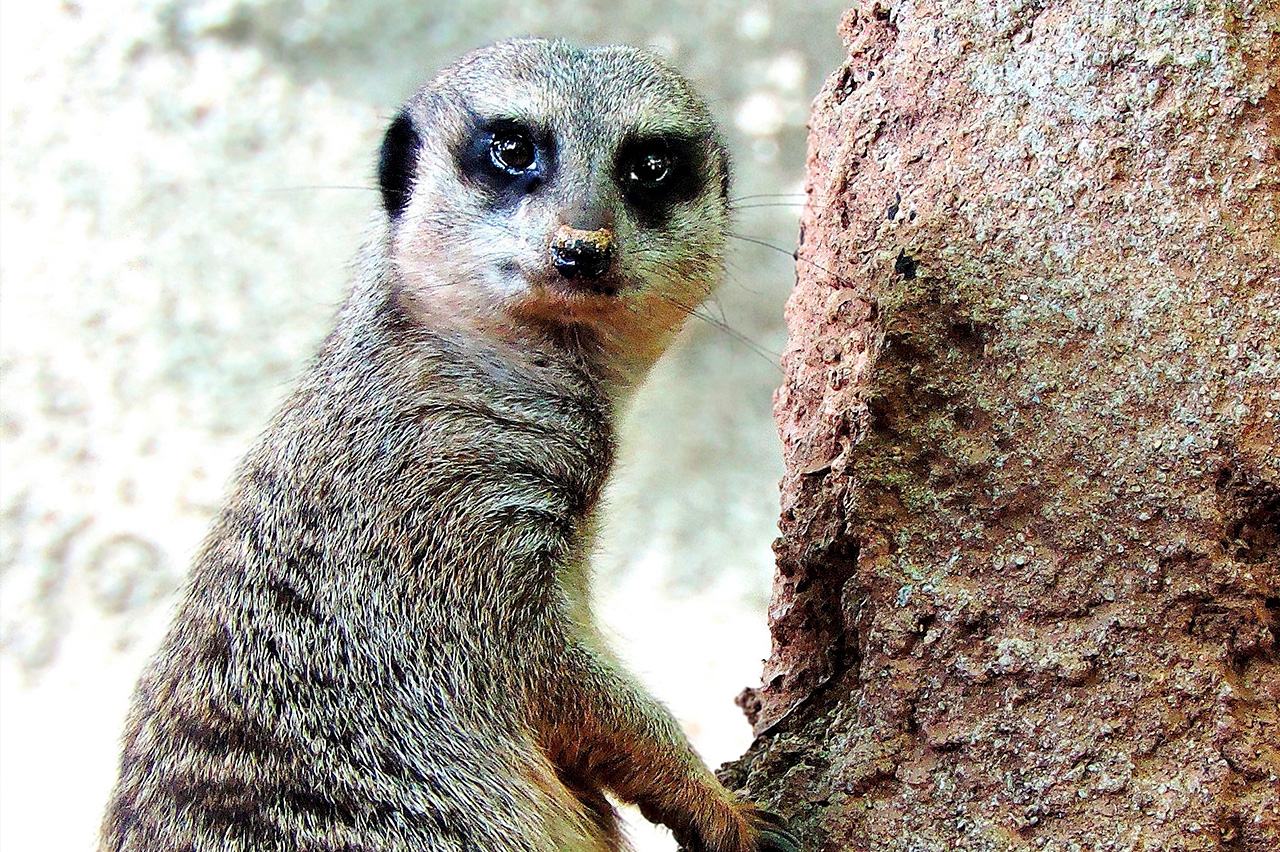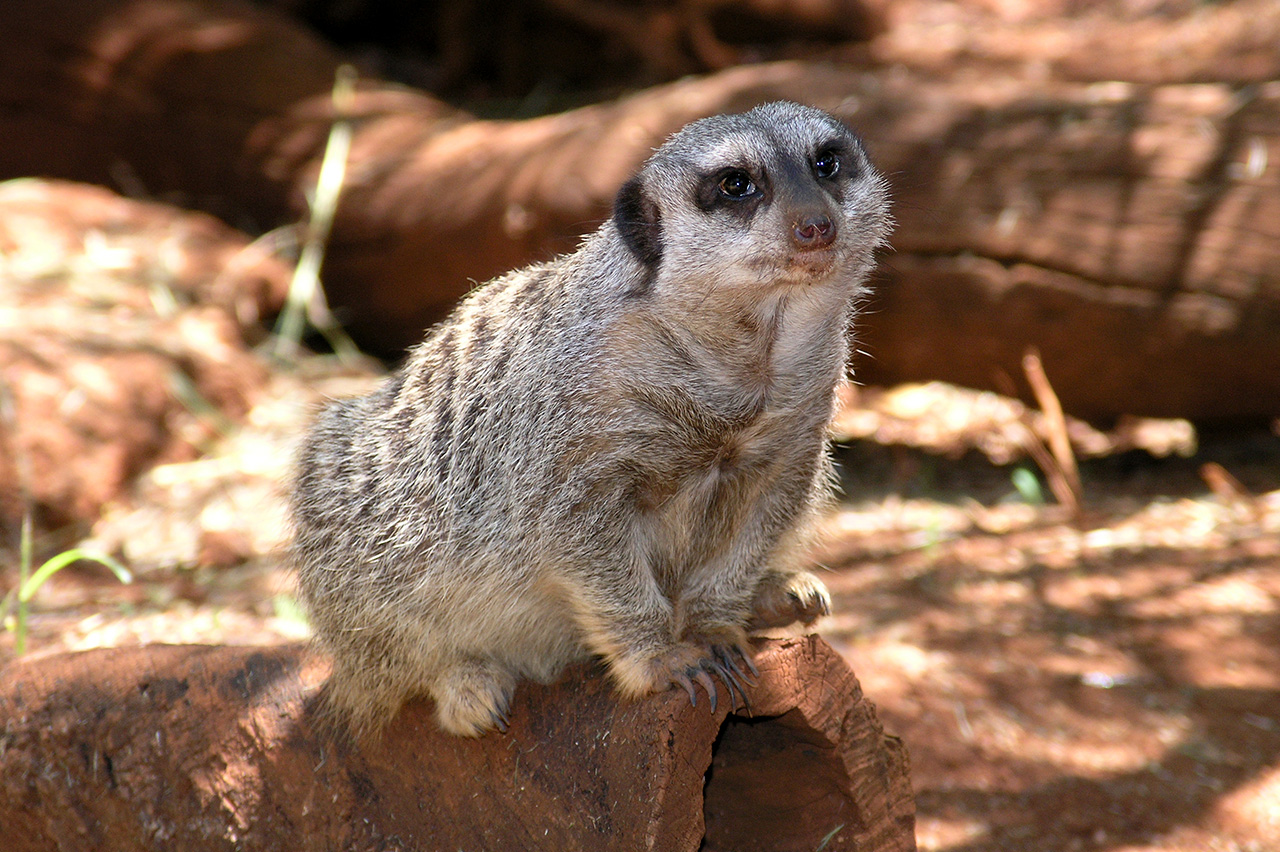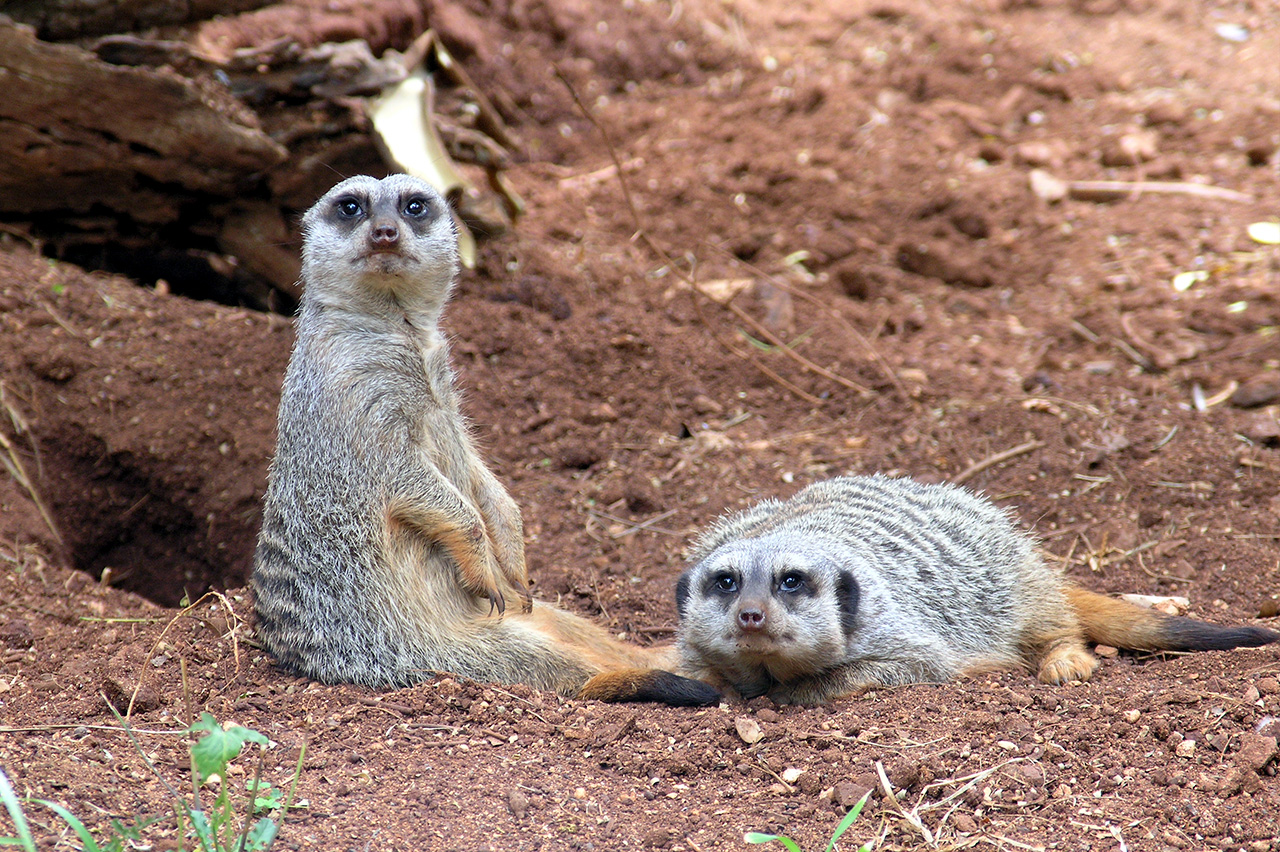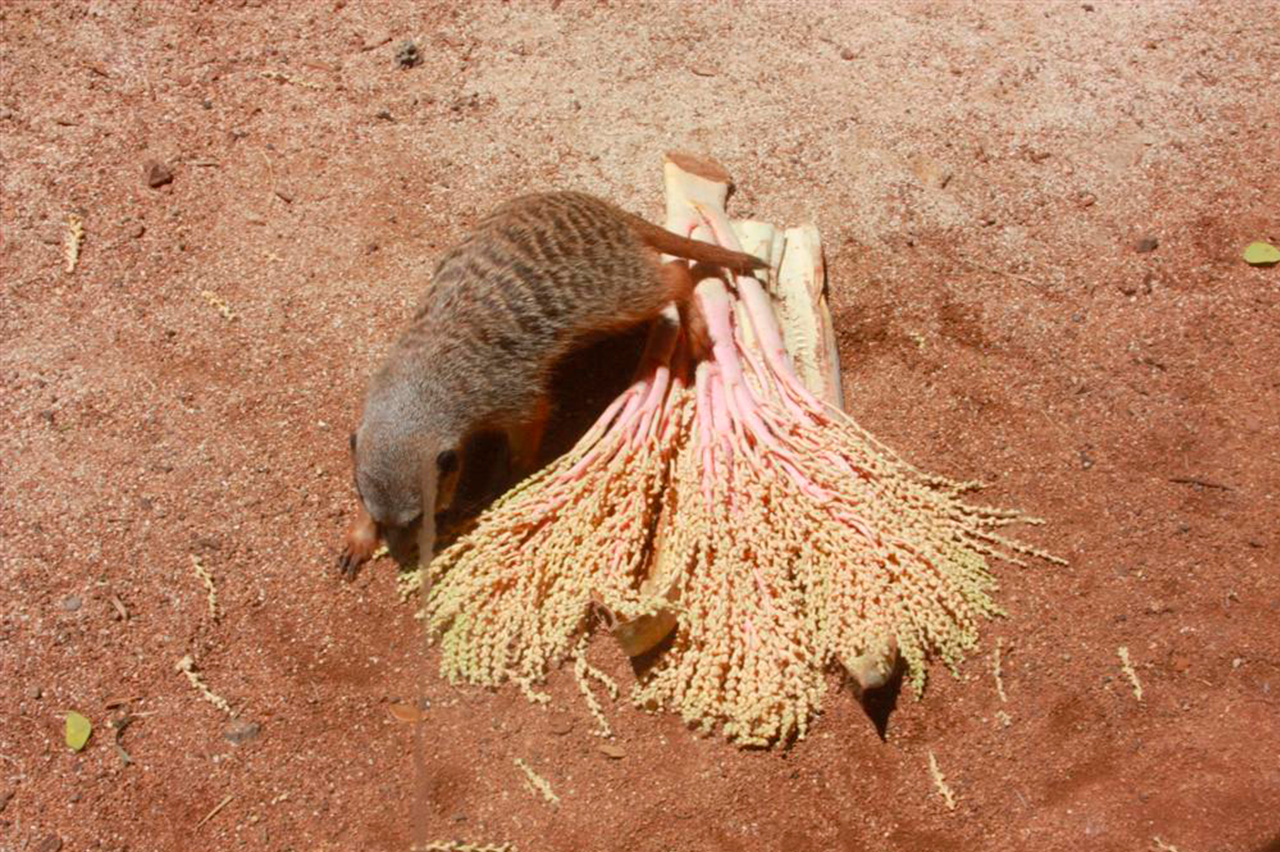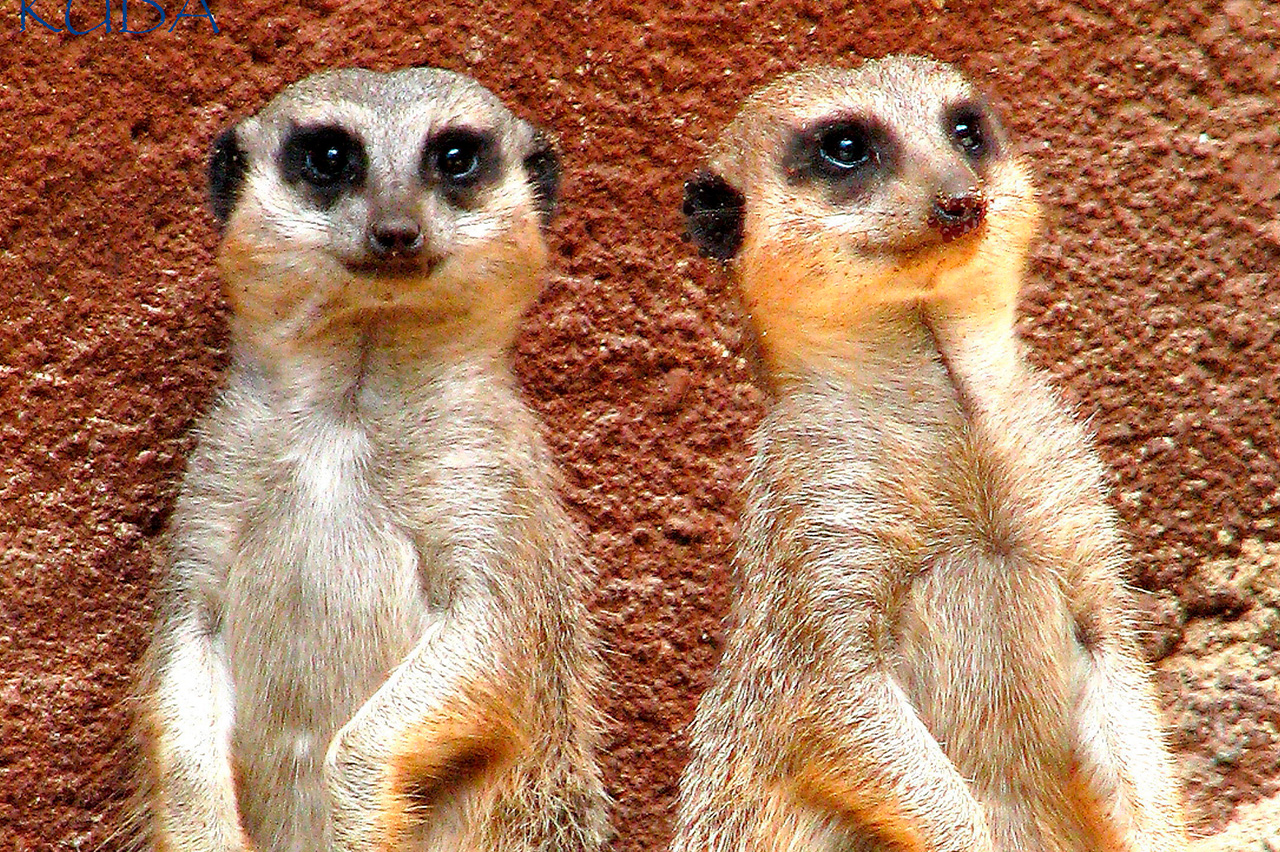Suricata suricatta
Meerkat
About Me
Meerkats are actually part of the mongoose family, and if any were to escape and formed a breeding colony, they would be a serious threat to our fragile ecosystem. Therefore all meerkats in the Honolulu Zoo are males.
The gray meerkat or suricate is a small mongoose. Its course hair is gray-brown to white-gray, often with a yellowish tinge. There are eight to ten brownish transverse bands on its back, and a dark ring surrounds each eye. The ears and the tip of the tail are black. Nose to tail tip, their maximum size is about 24 inches. Stockily built, with a narrow and pointed muzzle, it has a bulging forehead and very small rounded ears, which protrude only slightly from the fur and are set quite low on the animal’s head.
Meerkats are insectivores. They feed on insects, also on other invertebrates, mice, eggs, small birds, lizards and snakes.
Meerkats are often kept about homes in South Africa to kill rats and mice.
The gestation period of meerkats is eleven weeks, and the young are born at all times of the year. Litter size is two to four babies, which are born blind and with closed ears. The eyes and ears open ten to fourteen days later. The young receive their first solid good from their mother at about 6 weeks of age. Meerkats reach sexual maturity at one year of age. Females usually have just one littler a year. Captive meerkats are known to have lived over 12 years.
Meerkats are highly social, diurnal animals. They use their dens for protection. Sleeping and bearing young. They enjoy basking in the sun and may sleep in groups and form a tower, as three to five animals lie on top of each other, each at an angle to the one below.
Meerkats defend their food zealously. Even animals that have full stomachs will take food away from others. If other animals approach one while it is eating, it will rapidly turn 360 degrees, keeping his fore feet or head on the prey; or it may even lie across the prey.
When the fur is dirty or in disorder, the dirty parts are scratched with the hind legs or nibbled with the canine teeth. Meerkats also groom each other. Their long claws are used to remove pieces of food stuck between the teeth.
The meerkat is an IUCN species or Least Concern. However, they are a big deal in Hawaii for a different reason: If meerkats escaped and formed a breeding colony, they would be a serious threat to our fragile ecosystem. Therefore all meerkats in the Honolulu Zoo are males.
Other Mammals
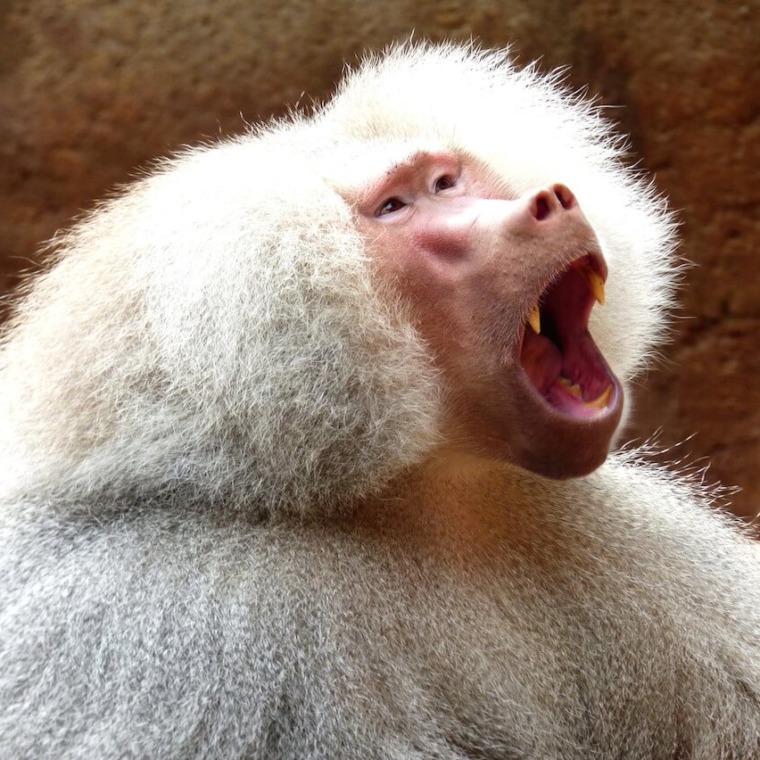
Sacred Baboons are common throughout northeastern Africa, but are extinct in the Nile region and Egypt, where they originally received their name and were worshiped by the ancient Egyptians.
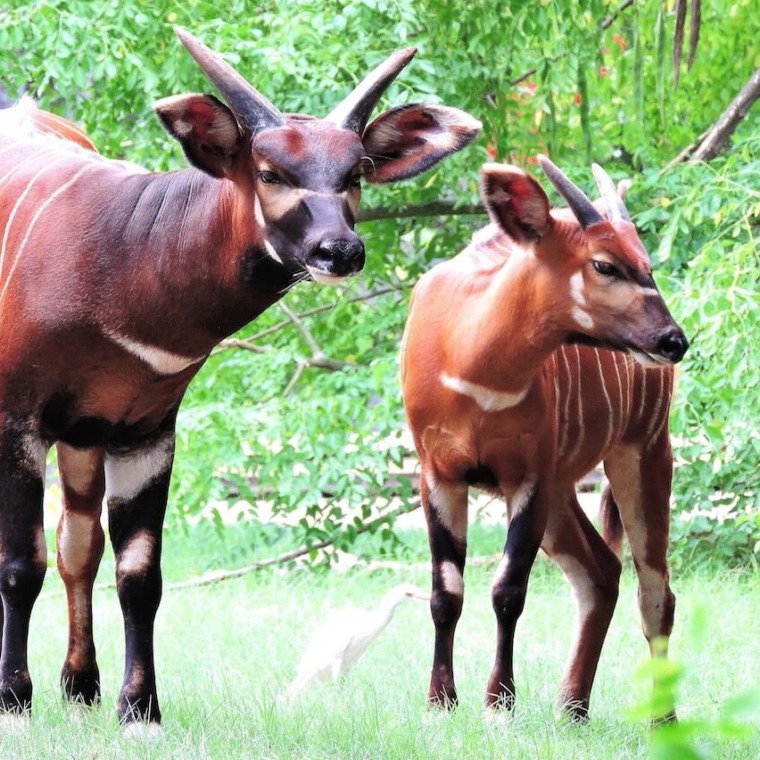
Bongo are most active at dawn and dusk, and often forage near the edges of wooded areas. They normally shy in the wild and flee into the forest for cover at the slightest provocation.
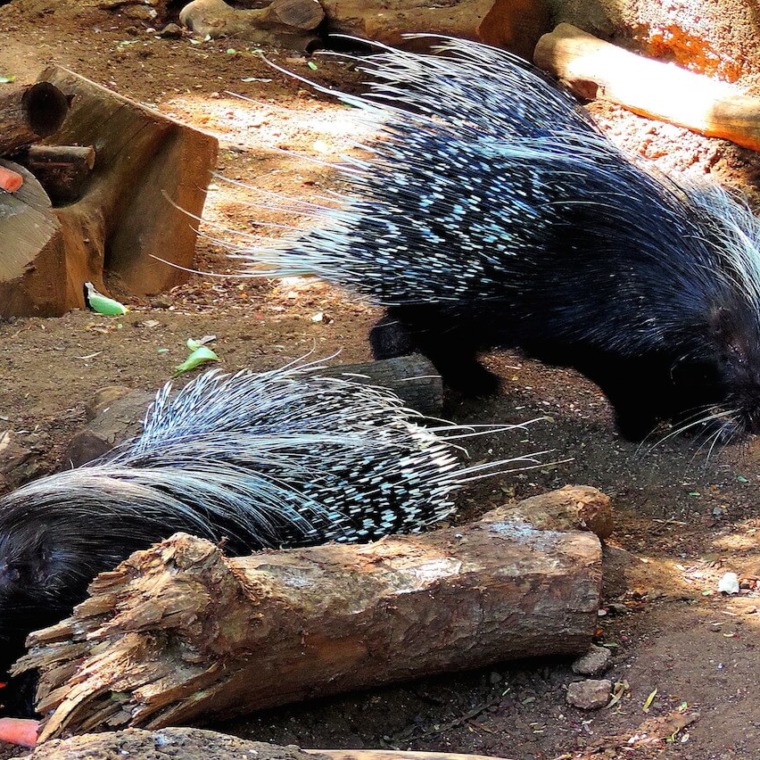
The North African crested porcupine is nocturnal. They are very adaptable and can be found in forests, on plantations, in rocky or mountainous areas as well as in deserts.
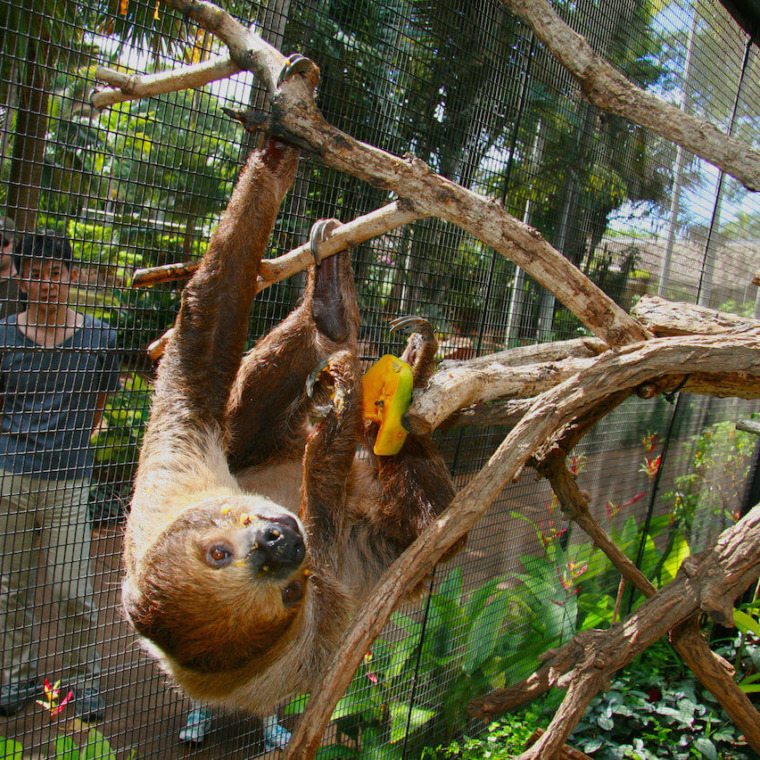
Sloths are found in Central and South America in the rain forest canopy. The Linne’s two-toed sloth is found in such countries as Nicaragua, Columbia, Venezuela, Surinam, Guyana, French Guiana, North Central Brazil, and Northern Peru.
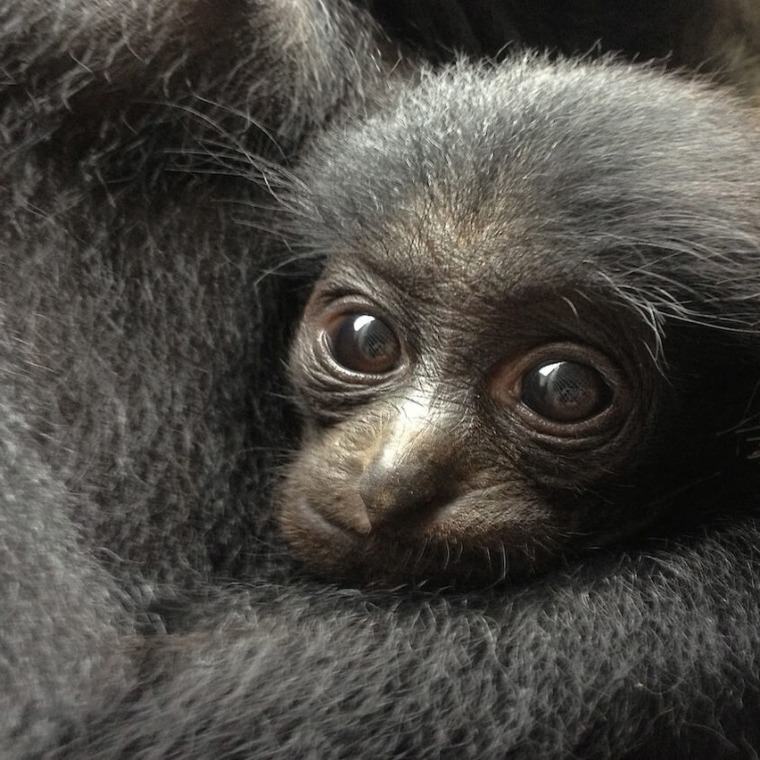
Siamangs range through southeastern Asia and are found in some numbers in the Malay Peninsula and Sumatra.


